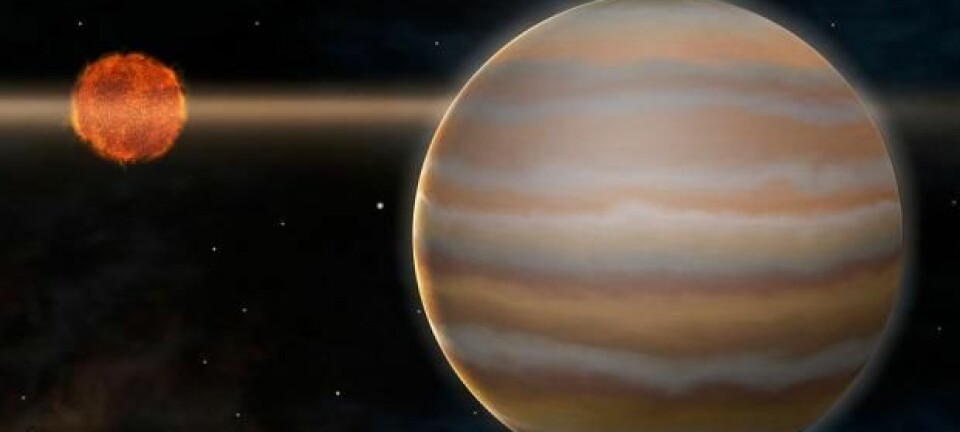
Clearing up a Big Bang mystery
Alternative ideas have been put forward to fix what astrophysicists see as a flaw in the standard Big Bang model. But which is the right one? Data from the Planck satellite could provide the answer.
Did anything exist before the Big Bang? And what actually happened 13.7 billion years ago?
The European satellite Planck could help provide the answers to these questions through the data it sends back to earth over the next five years.
Planck, which was launched by the European Space Agency (ESA), is now making measurements of the cosmic microwave background (CMB) radiation which originated from the Big Bang. Detailed analysis of this electromagnetic radiation, which was discovered by Arno Penzias and Robert Wilson at Bell Labs in 1965, could provide the answers as to exactly what happened in the Big Bang.
"We hope this project will give us a deeper understanding of the origin of the universe," says former CERN scientist Martin Snoager Sloth, who has received funding to set up a research group at the University of Southern Denmark.
The expanding universe

If it were possible to travel 13.7 billion years back in time and experience how the universe was shortly after the Big Bang, there wouldn't be much to see. All the original matter was so hugely compressed that even the photons which provide visible light were prevented from escaping by the protons and electrons in the dense, pitch black mass.
Following the original explosion, the universe has been constantly expanding. Some 380,000 years after the Big Bang, the mass of protons and electrons were sufficiently thinned out by expansion to allow the first photons to escape. The universe became transparent and light radiated out.
Since then, the photons have travelled out into expanding space, carrying with them a snapshot of the universe when it was just 380,000 years old. These photons, which originated in the Big Bang, are what we know today as the cosmic microwave background.
New measurements
Research into CMB radiation has been carried out on several previous occasions to measure the temperature of the universe.

Just like the rest of the universe, the background radiation has cooled as the universe expands. Currently the CMB temperature is 2.73 Kelvin, which corresponds to minus 270 degrees C. This means that the temperature of the universe as a whole is just 2.73 degrees above absolute zero.
The Planck satellite is now undertaking the most accurate CMB measurements so far made, which will give the research team at the University of Southern Denmark new insight into the origin of the universe.
A flawed model
A more detailed insight is needed because astrophysicists have found that there are problems with the standard Big Bang model.
"On the very large scale, the universe looks the same in all directions to a high level of precision,” says Sloth. “The distribution of galaxies in one direction is the same as all the others. Similarly, CMB radiation from the Big Bang is the same in all directions. But the standard Big Bang model struggles to explain this. There is simply a flaw in it."
The flaw stems from the fact that no two points in the universe can have causal contact if they are more than 380,000 light years apart, since no information can travel faster than the speed of light. In consequence, the physical properties of the universe as a whole should vary in different regions of space. But everything looks the same.
Inflation model
Several ideas have been put forward to fix the flaw in the standard Big Bang model. One of the most popular is the so-called inflation model, which is based on the assertion that the universe underwent an extraordinarily rapid expansion in the second after the Big Bang, which had the effect of making the universe homogeneous.
"A short and extremely rapid expansion just after the initial explosion would explain why parts of the universe which were more than 380,000 light years apart had the same temperature when the cosmic microwave background radiation broke through," explains Sloth.
"The inflation model is based on a hypothetical inflaton particle, which gives an explanation for the homogeneity that the standard model fails to provide."
Pre-Big Bang model
A competitive theory is the pre-Big Bang model, which is based on the assertion that the universe contracted before the Big Bang, after which it began to expand again.
"According to the pre-Big Bang scenario the universe underwent an endlessly long phase where it contracted into a dense and hot condition before it again started to expand," says Sloth. "In this model, all the matter and radiation in the universe comes from a particle called the curvaton particle."
Data ready this year
The very precise measurements of the cosmic microwave background radiation, which the Planck satellite can supply, will give researchers the answer to which model is correct.
"When we zoom in on the 2.73 degree radiation from the Big Bang, we will see small temperature changes that are detectable to the fifth decimal place," says Sloth. "By studying the radiation with Planck's microwave telescope, we will be able to establish whether the data supports an inflaton particle or a curvaton particle."
It is expected that the Planck satellite's first measurements will be ready during 2012.
Translated by: Nigel Mander







